Irish soda bread is a rustic quick bread recipe leavened with baking soda instead of yeast. It has a mild, buttery flavor, and since you can make Irish soda bread with or without currants, it can also have a slightly sweet flavor. Either way, you’re going to fall in love with it. This is also a fantastic recipe for serving on St. Patrick’s Day or just because.
This post is an update from a 2018 version. It now has pretty pictures and more concise instructions.
What is Irish Soda Bread?
Authentic Irish soda bread is a homemade bread similar to buttermilk biscuits or scones. It’s just called “soda bread” in Ireland because they’re already in Ireland, so there’s no need to be redundant. Irish soda bread is leavened with baking soda (bicarbonate of soda) instead of yeast. According to the woman who taught me the basics of soda bread, Moira, that’s how traditional soda bread has been prepared for centuries.
Fun fact: I studied in Virginia in County Cavan, Ireland, in the nineties. That’s where I met Moira. According to Moira, the flour back in the day changed with the times, but since making soda bread was so inexpensive, many Irish stuck to the softer white flour instead of turning to the newer hard wheat varieties. The traditional ingredients in Irish soda bread are flour, baking soda, buttermilk, and salt. Maybe caraway seeds if you’re feeling extra.
No shade, but my version needed a bit more, and even still, it is not too far removed from the authentic recipe. That’s what culinary arts are all about, though. Learning the basics- hopefully from someone of that culture- and putting your own spin on it. With credit always given, of course. Even though this isn’t a traditional Irish soda bread recipe, I must thank Moira for giving me the inspiration.
Here’s the Virginia Park Lodge in County Cavan, Ireland, where Moira and I met.
What Ingredients Do I Need to Make Irish Soda Bread?
To make Irish soda bread, you need a combination of bread flour and cake flour, baking soda, baking powder, kosher salt, sugar, buttermilk, and unsalted butter (Irish butter, if you have it). I mix currants into my Irish soda bread, as well. Some other add-ins for your Irish soda bread are orange zest, lemon zest, or chopped candied ginger. Those ingredients will steer it away from being traditional Irish bread, but you’ll still bake up a tasty bread.
The flour mixture replicates pastry flour (the closest thing we have to it here in the United States is all-purpose flour). Because I prefer a lighter crumb than all-purpose flour can provide, I’ve developed this recipe to closely mimic pastry flour.
What Does Sodium Bicarbonate Do in Baking?
Sodium bicarbonate, AKA baking soda, is a leavening agent used in Irish soda bread to help the bread rise. However, sodium bicarbonate needs a liquid (moisture) and an acid to work.
When a liquid and acid are present, the soda releases carbon dioxide, which creates the chemical reaction needed to leaven whatever it’s supposed to. This happens as soon as the moisture and acid are added, so, unlike baking powder, your clock starts ticking once the reaction begins. The heat from the oven helps the soda do its thing, so once you add the buttermilk- the acid and the moisture- you need to work fast to get the bread into the pan and into the oven.
I also add baking powder to my dough because it helps the soda give it more height.
Do I Have To Add Currants?
The most common fruit in Irish soda bread is currants. Currants are just dried grapes. The only difference between them and raisins is the variety of grapes. Adding currants to Irish soda bread gives an otherwise plain-tasting bread a sweet-tart characteristic.
You can replace the currants in your Irish soda bread with cranberries, raisins, or sultanas (golden raisins). The classic Irish soda bread recipe doesn’t have any fruit, so you can omit the currants and still have some pretty good soda bread.
I recommend rehydrating the currants (or any dried fruit) if you use them. As they are, the currants are hard and really chewy. It’s not a horrible thing, but they get even harder and chewier when you start baking them. Soak the currants in hot tap water for 20 minutes before adding them to this recipe. I usually start soaking them before measuring out the rest of the ingredients. By the time I’m ready to start, they’re all hydrated. You don’t have to rehydrate them, but it does make a difference.
Drain them in a fine-mesh sieve before adding them to the rest of the ingredients in the recipe.
What’s the Best Pan to Bake Irish Soda Bread In?
The Irish baked soda bread in cast-iron skillets or pots on the hearth. They’d snuggle the pot into the embers and allow the bread to bake until golden. Some Irish baked theirs on a griddle, but the majority employed what we know as a dutch oven.
I love how evenly my loaves bake in my cast iron dutch oven, so that’s what I use to bake my bread in. If you plan to bake your soda bread in a cast-iron skillet, ensure it’s at least 3 inches deep to get a nice round loaf. You can also use 9 or 10-inch cake pans. You can bake the loaf-free form on a baking sheet pan lined with parchment paper. I don’t love this method because the loaf doesn’t bake as tall or round as I like.
Lightly spray your pan with non-stick baking spray. Crisscross two 3-inch wide strips of parchment paper inside the pot. This isn’t a must, but it does help remove the baked loaf from the pot later.
Once the pot is prepped, set it to the side.
How Do I Make the Irish Soda Bread Dough?
To make the soda bread dough, use your hands to toss the dry ingredients together in a large mixing bowl for a minute. You want to make sure the ingredients are well combined.
Next, shred the very cold butter into the dry ingredients. Cold butter is essential in this recipe because you want it to hold its shape after mixing it with the dry ingredients. Use your fingers to break the butter into smaller pieces and coat it with the dry ingredients. The mixture should resemble coarse cornmeal when you’re done.
Toss the drained currants into the rest of the ingredients until they are coated in the flour.
What If I Don’t Have Buttermilk?
Add the buttermilk to the bowl with the rest of the ingredients. Use your hands to mix the buttermilk into the ingredients until it forms a very thick dough. Scrape the dough onto a lightly floured surface and fold it over 2 times or until it holds together. Don’t over-mix the dough, or your bread will be tough when baked. If the dough is not holding together, add a 1/4 cup more buttermilk.
Buttermilk is easy to make at home if you don’t keep it on hand. To make buttermilk, stir 1 tablespoon of lemon juice (or white vinegar) into 1 cup of skim or 2% milk. You can also use whole milk to make buttermilk, but I find it curdles way too much when I use it. Allow the mixture to sit for 15 minutes to allow the acid to curdle the milk. You now have buttermilk! This recipe calls for 1 1/4 cups of buttermilk (or 295 milliliters), so you need to measure the 1 1/4 cups and add 1 tablespoon plus 3/4 teaspoon of lemon juice or vinegar.
Remember that once you add the buttermilk, your clock starts ticking. Work quickly to get the bread into the pan for the best results.
Why Is There A Cross On Irish Soda Bread Loaves?
Press the dough into the prepared pan to make an even surface.
Irish soda bread always had a large cross shape cut on top of it to guard against evil spirits. I can use all the help I can get to avoid evil spirits, so I always mark mine with one. You don’t have to, though.
To make the cross, use a sharp knife or razor blade to cut the shape into the top of the dough.
I also like to sprinkle more cake flour on top of the loaf before baking. This is purely for aesthetics, so feel free to skip this step.
How Long Do I Bake the Loaf?
Bake Irish soda bread uncovered in a 375°F (190°C) preheated oven for 40 minutes. The loaf will have a hollow sound when you thump it and be a gorgeous golden brown color.
Remove the pot (or pan) from the oven and cover the pot with its lid. You could drape a clean kitchen towel over the loaf if you baked the bread in a cake pan.
Covering the loaf softens the crust of Irish soda bread slightly. If you like the texture of a really crisp crust, you can skip this step. Cool the bread, covered, for 20 minutes.
How Do I Serve It?
The Irish usually eat Irish soda bread during teatime. My family eats it as breakfast bread, much like biscuits and scones.
Use a serrated knife to slice the warm loaf and spread salted butter or your favorite jam over the slices. Tea is a great drink to enjoy with it, though I’m a coffee girl myself. You can make it a full meal by serving it with fresh fruit and yogurt. Bacon is also a good idea. When is it not?
How Do I Store Leftover Irish Soda Bread?
Store baked Irish soda bread in an airtight container at room temperature for 3 days.
Reheat slices in the toaster to give them that freshly baked flavor.
Can I Freeze the Bread After Baking It?
You can freeze Irish soda bread for 2 months. First, allow it to cool completely. Wrap the loaf in plastic wrap- I also put it in a freezer storage bag- and freeze it for 2 months.
You can thaw the frozen loaf at room temperature, then slice and reheat using your preferred method.
What Other Recipes Can I Serve With This Soda Bread?
If you want to make a whole Irish meal, here are more of my favorite recipes to serve this loaf with:
- Harvest Pork Stew
- Guinness Beef Stew
- Vegan Lentil Stew (not Irish, but still tasty)
Again, this recipe is amazing on its own.
This Irish Soda Bread recipe is one of a few Irish recipes I have on the site. Seeing as my maiden name is Irish, my Irish roots (not by choice) shine through in each of them. You’ll see how this is a very easy bread recipe to make. Its simple ingredients mean you can make it whenever you crave Irish food. Let me know what you think of this recipe in the comments below. Don’t forget to pin it to your bread board for easy finding later.
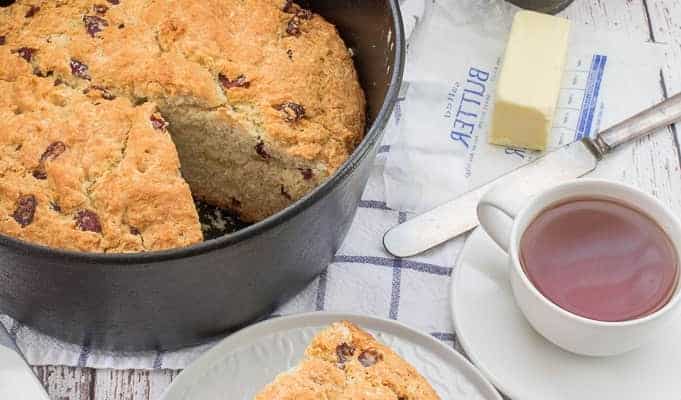
Irish Soda Bread
at Sense & EdibilityEquipment
- cast iron dutch oven or 10-inch cake pan
Ingredients
- 1 cup (145 grams) currants
- 3 cups (420 grams) bread flour
- 1 cup (125 grams) cake flour
- 2 tablespoons (25 grams) granulated sugar optional
- 2 teaspoons (10 grams) baking soda
- 1 teaspoon (6 grams) kosher salt
- 1/2 teaspoon (2 grams) baking powder
- 1/2 cup (113 grams) unsalted butter cold
- 1 1/4 cups (310 milliliters) buttermilk cold
Instructions
Rehydrate the Currants
- Soak the currants in 1 cup of very hot tap water for 20 minutes.Drain the currants well using a fine-mesh sieve and set them aside.
Prepare the Irish Soda Bread Dough
- Preheat your oven to 375°F (190°C). Lightly spray a 5 qt cast iron dutch oven with non-stick baking spray. Crisscross two 3-inch wide strips of parchment paper inside the pot. Set it to the side while you prepare the dough. *See notes for baking without a dutch oven.*
- In a large mixing bowl, use your hands to toss the bread flour, cake flour, granulated sugar, baking soda, kosher salt, and baking powder together for 1 minute or until well combined.
- Next, shred the cold butter into the dry ingredients. Use your fingers to break the butter into smaller pieces and coat it with the dry ingredients. The mixture should resemble coarse cornmeal when you're done.
- Toss the drained currants into the butter-flour mixture until they are coated in the flour. Add the buttermilk to the bowl with the rest of the ingredients.
- Use your hands to mix the buttermilk into the ingredients until it forms a very thick dough. Scrape the dough onto your countertop and fold it over 2 times or until it holds together. If the dough is not holding together, add a 1/4 cup more buttermilk.
Bake, then Cool the Irish Soda Bread
- Press the dough into the prepared pan. Use a bench scraper or knife to mark a cross on the surface of the dough.Bake the Irish soda bread uncovered in a 375°F (190°C) oven for 40 minutes. The loaf should sound hollow when you thump it and be a golden brown color.
- Remove the pot (or pan) from the oven and cover the pot with its lid. You could drape a clean kitchen towel over the loaf if you baked the bread in a cake pan. Cool the bread, covered, for 20 minutes.
- Slice the warm loaf and spread salted butter or your favorite jam over the slices.
Notes
Swaps and Substitutions:
- Use a 9 or 10-inch cake pan or bake the loaf free-form on a sheet pan lined with parchment paper instead of using cast iron dutch oven.
- Use 4 cups (or 550 grams) all-purpose flour instead of the bread and cake flours. The bread's texture will be more crumbly with substitution.
- Replace the buttermilk with an equal amount of plain greek or regular yogurt, sour cream, or kefir.
- Replace the currants with cranberries, raisins, or sultanas (golden raisins), or omit the fruit completely.
Tips and Techniques:
- Start soaking the current before measuring out the rest of the ingredients. By the time you're ready to start, they will be soft.
- Currants that aren't rehydrated become harder and chewier when you start baking them.
- The parchment paper in the pan isn't a must, but it does help remove the baked loaf from the pot later.
- Cold butter is essential in this recipe because you want it to hold its shape after mixing it with the dry ingredients.
- Remember that once you add the buttermilk, your clock starts ticking. The baking soda reacts, and the longer it takes to get into the oven, the shorter your loaf will be.
- Don't overmix the dough, or your bread will become tough as it bakes.
- You can sprinkle 1 tablespoon of cake flour over the loaf before baking for a prettier loaf after baking.
- Covering the loaf after removing it from the oven softens the crust of Irish soda bread slightly. If you like the texture of a really crisp crust, you can skip that step.
Storage Instructions:
- Transfer leftovers to an airtight container.
- Store the bread at room temperature for 3 days.
- Reheat slices in the toaster to give it that freshly baked flavor.
Freezing Instructions:
- Allow the loaf to cool completely.
- Wrap the loaf in plastic wrap and then into a freezer storage bag.
- Freeze the bread for 2 months.

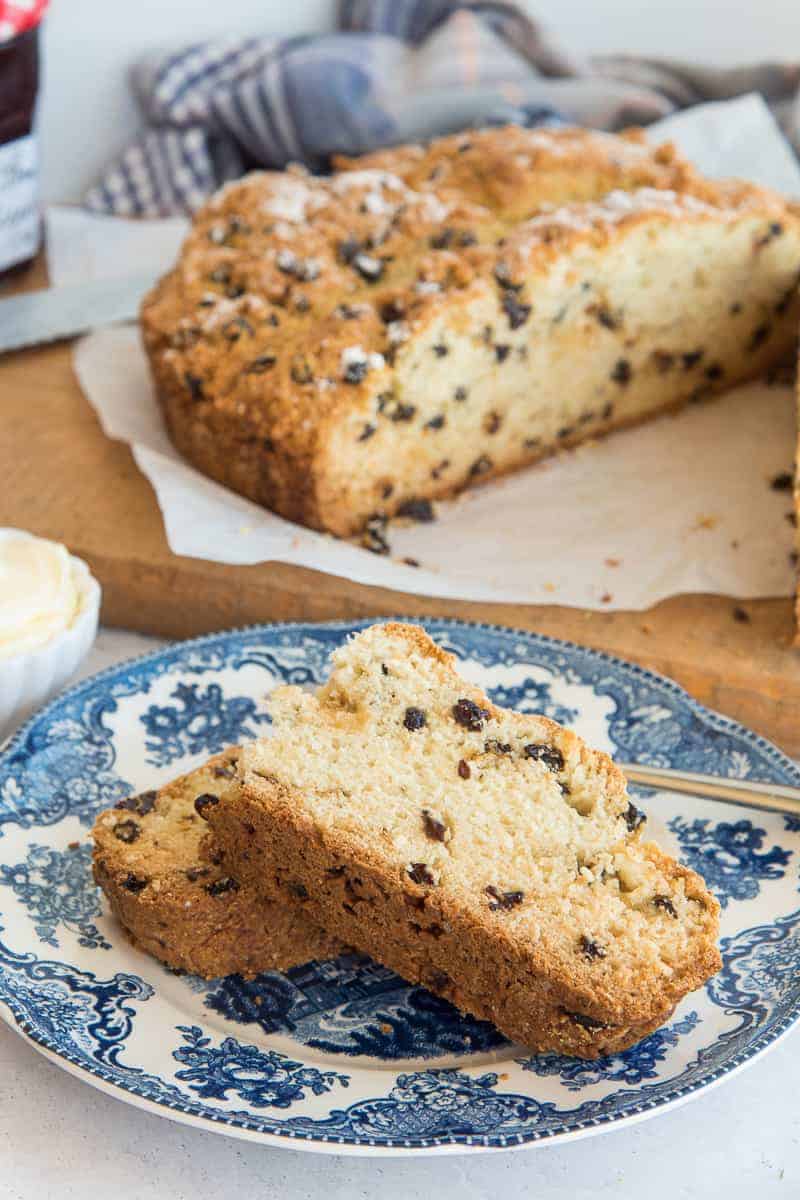
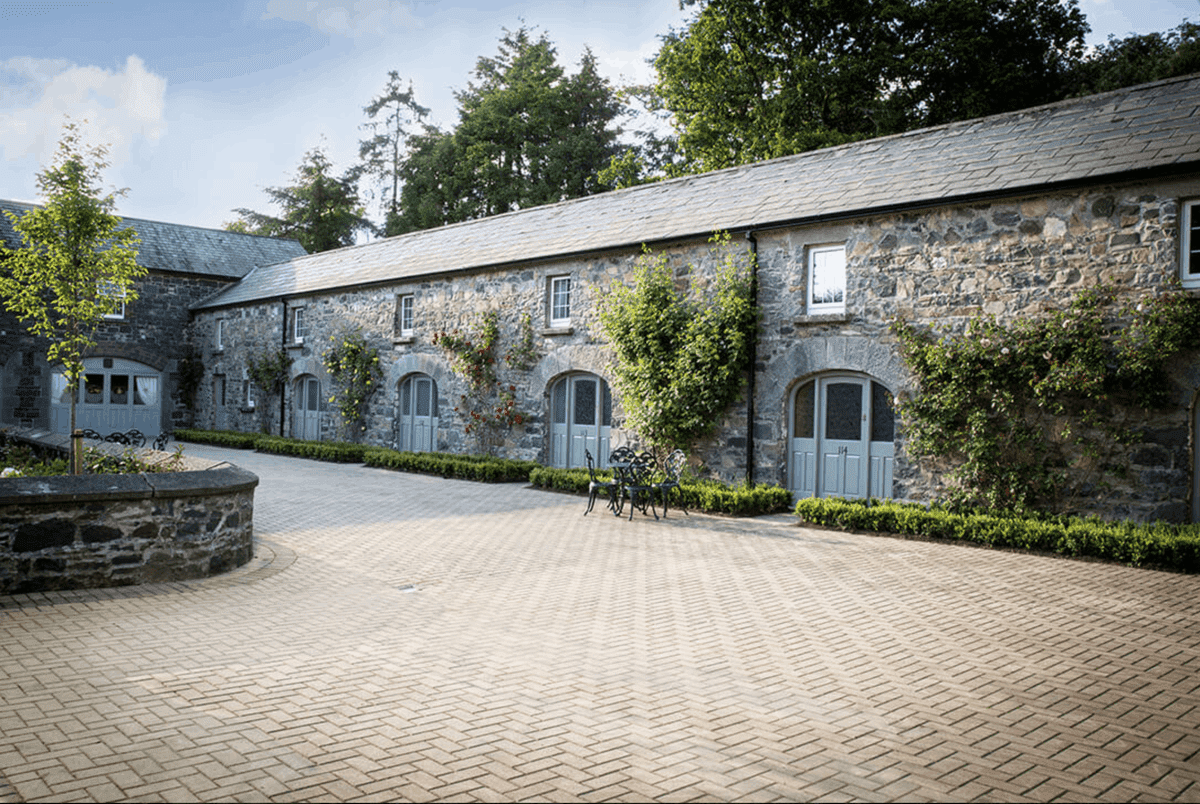
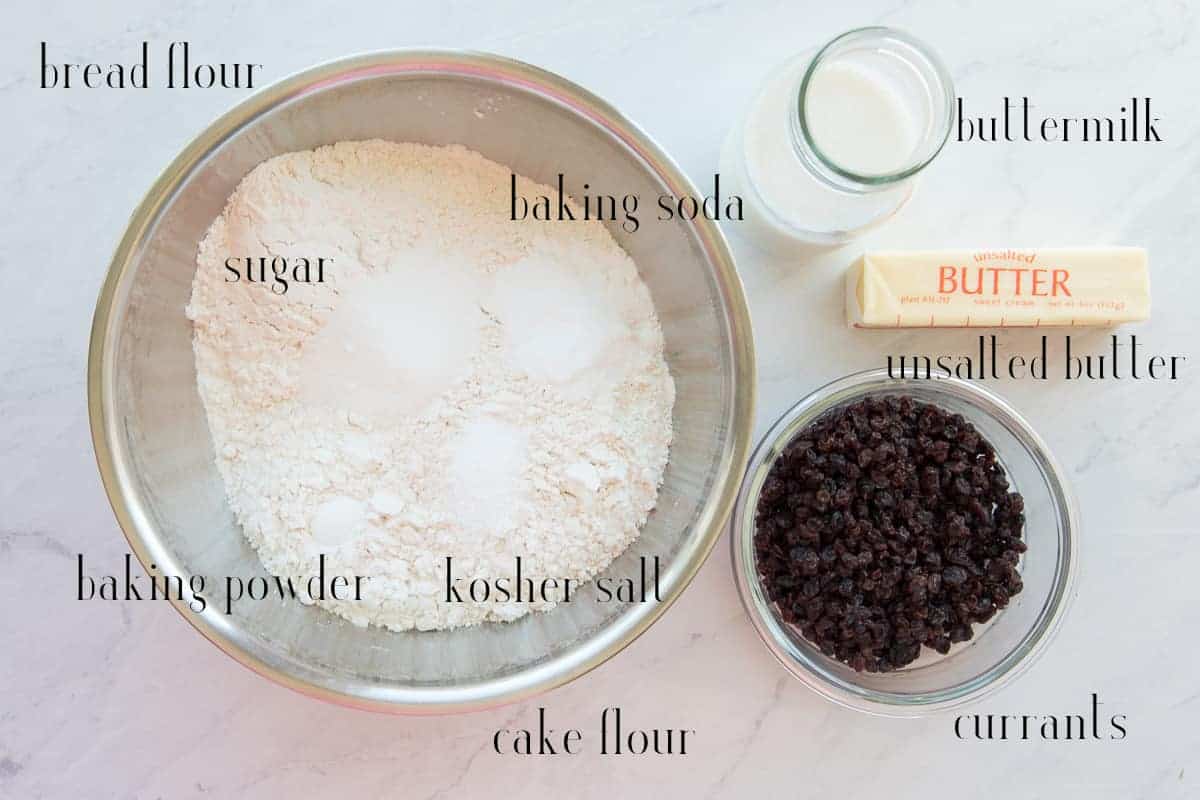
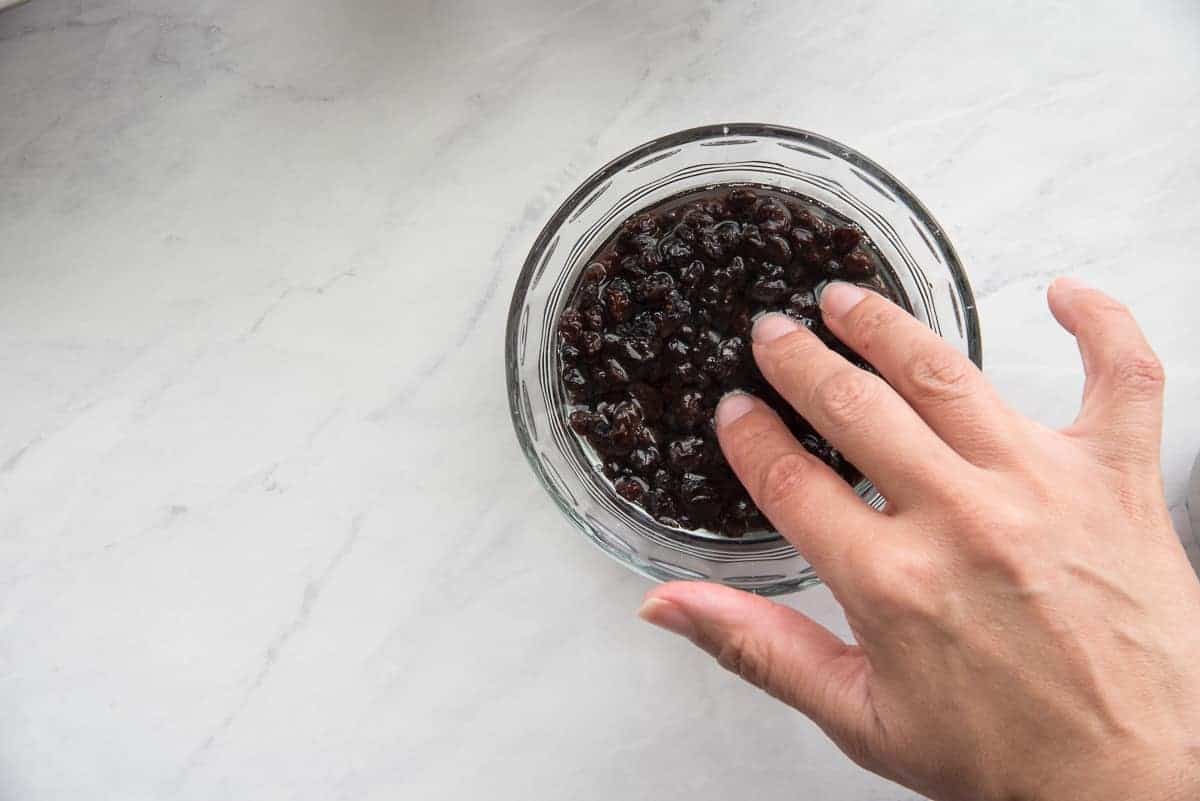
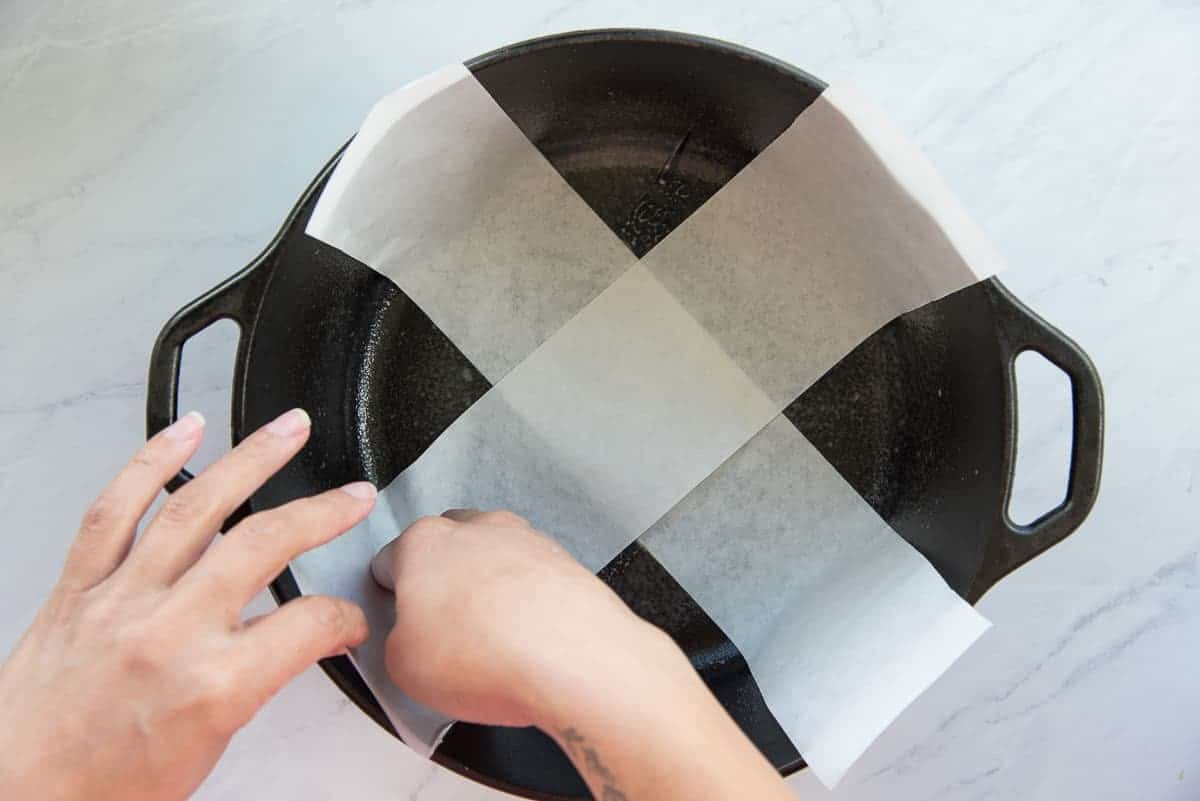
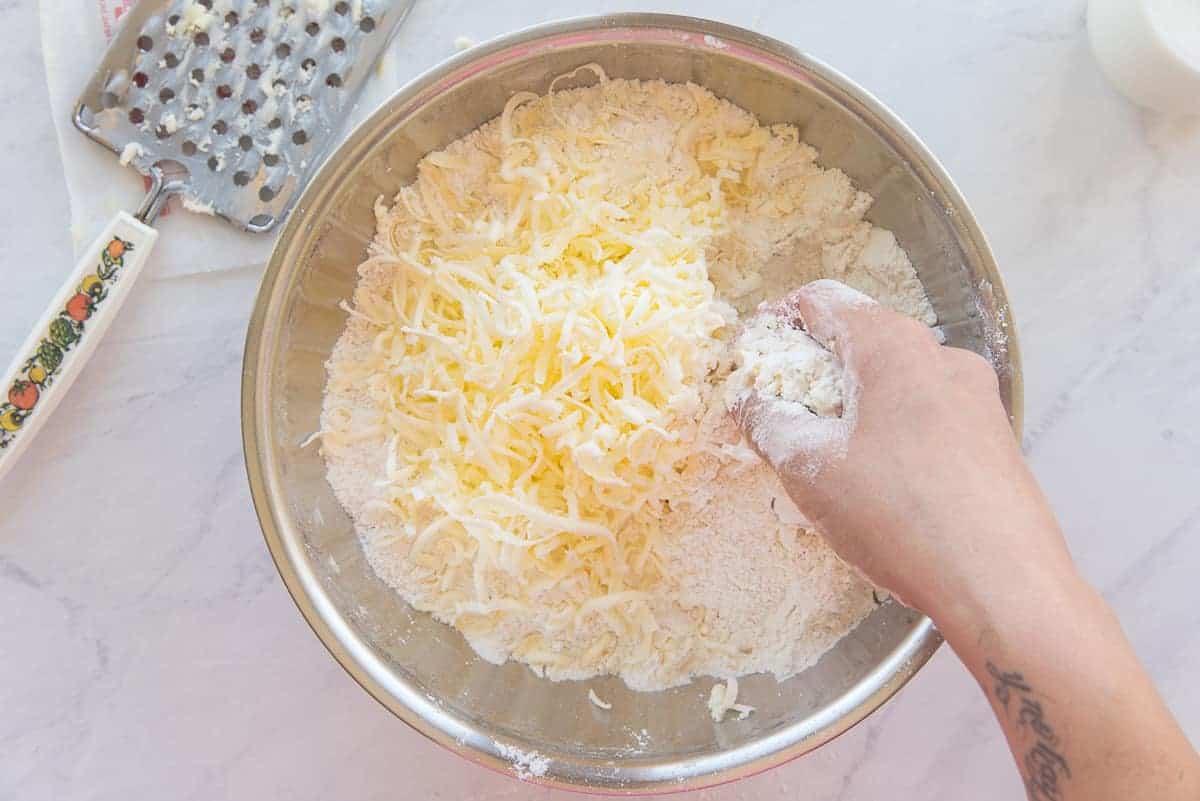
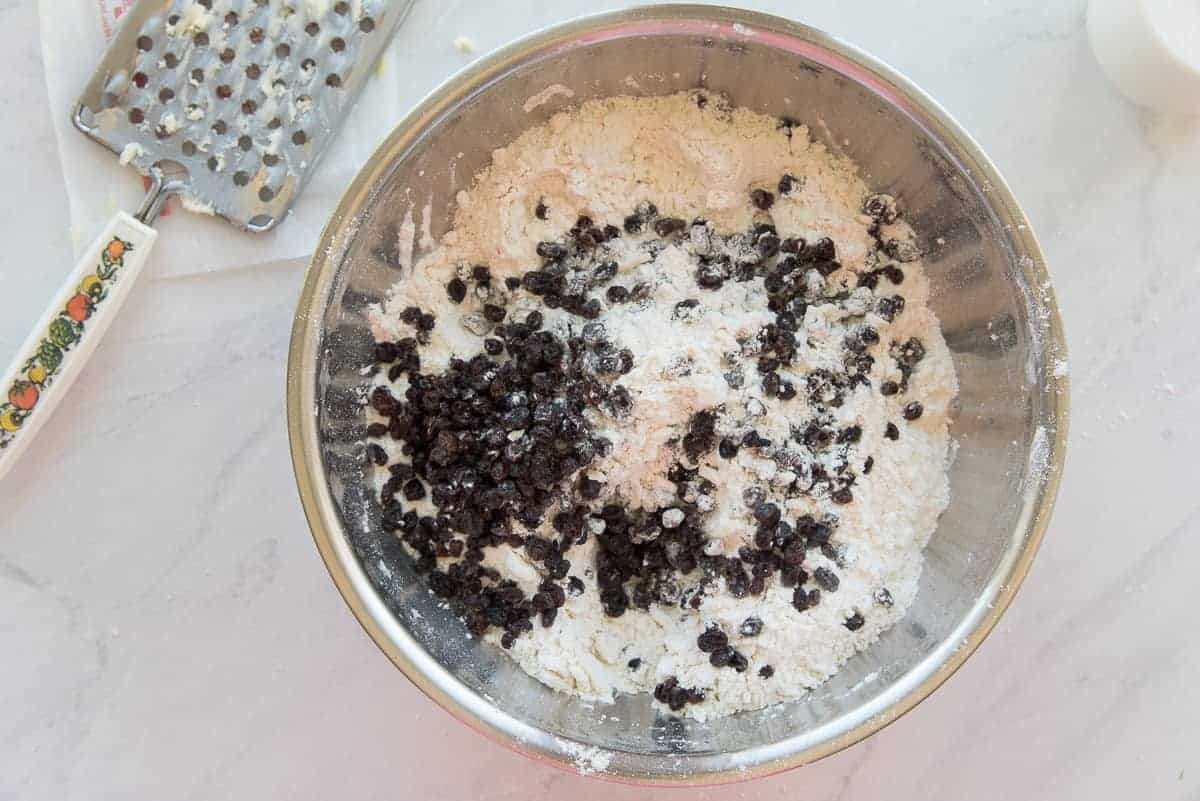
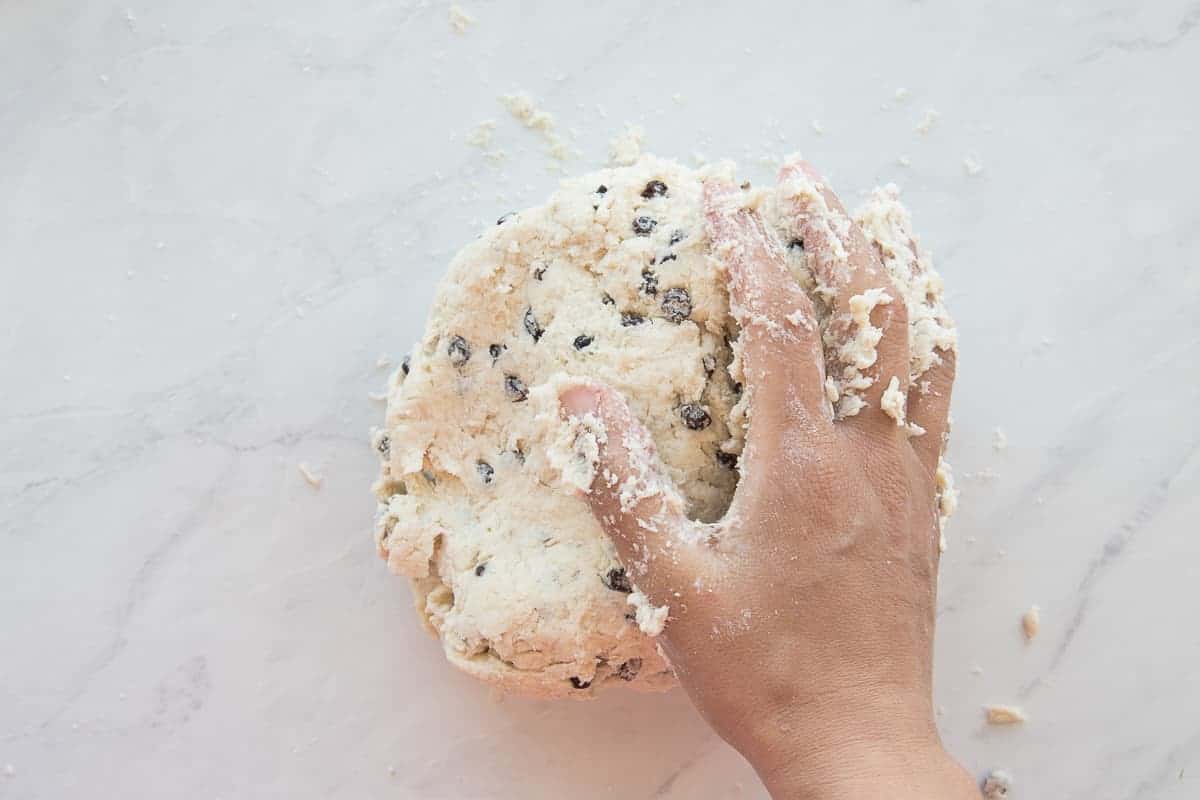
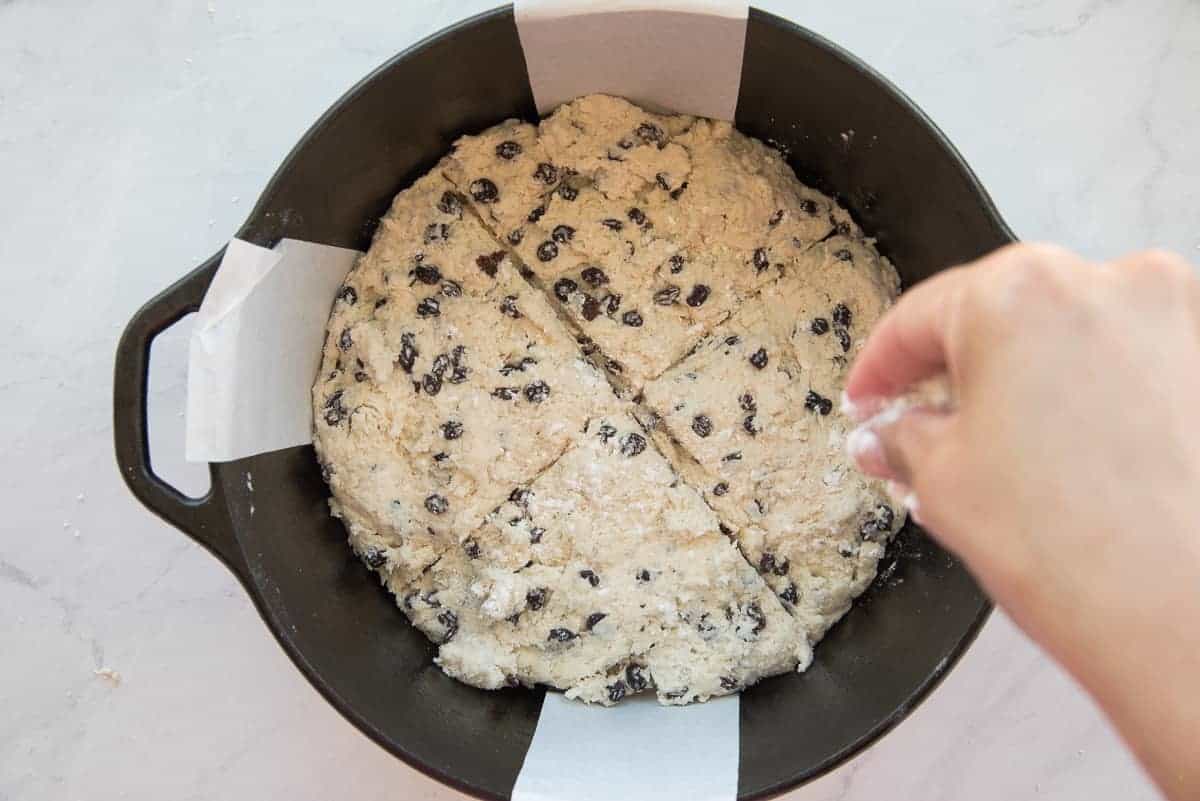
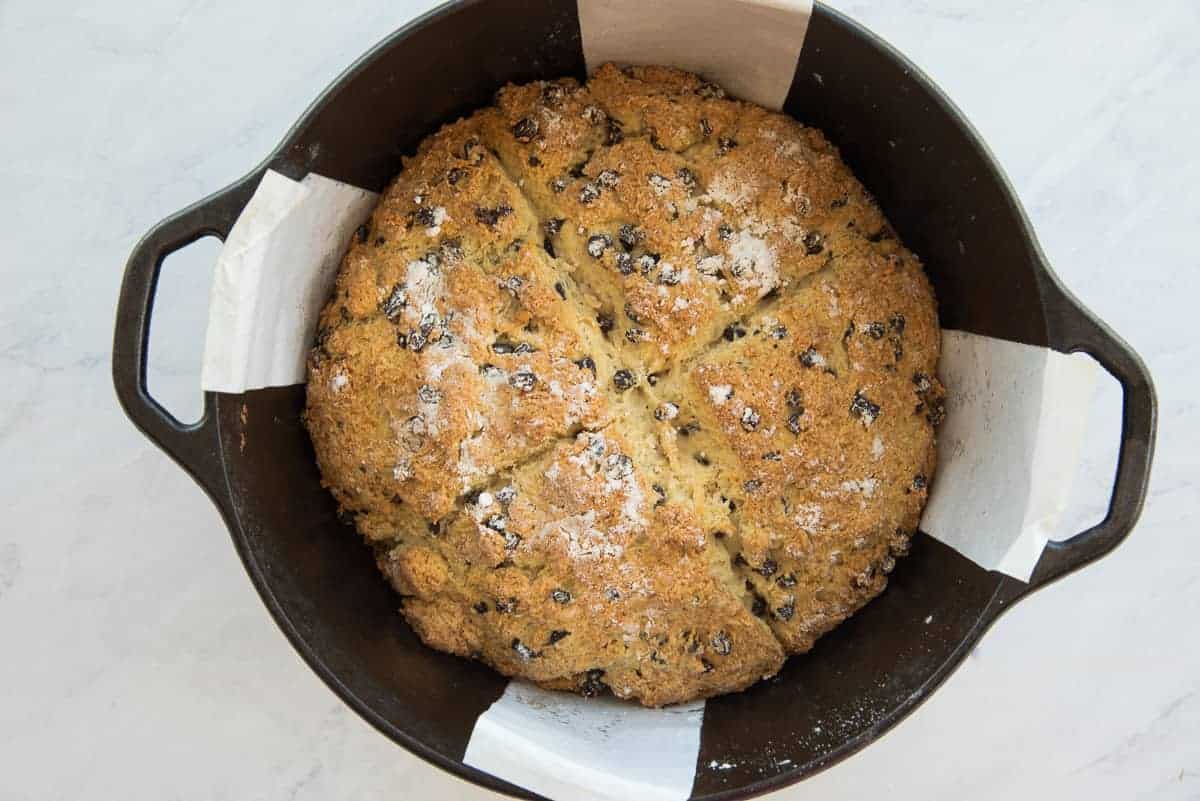
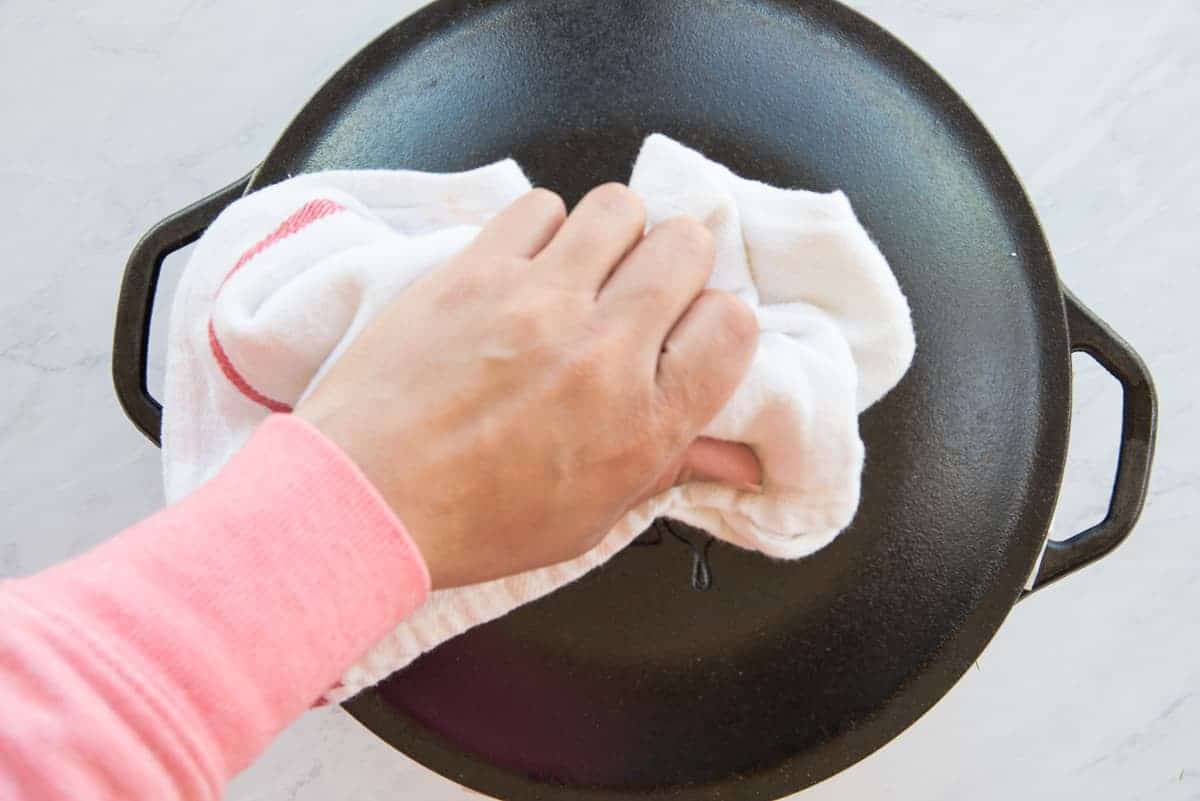
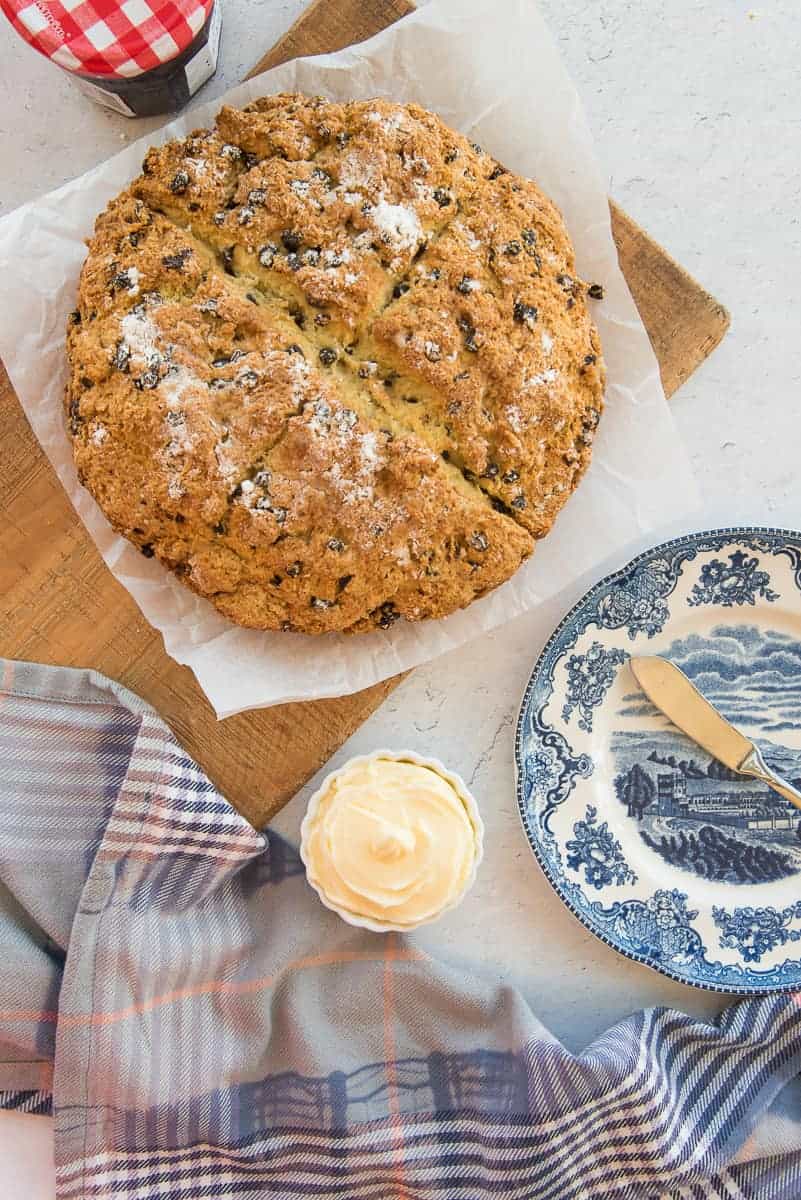
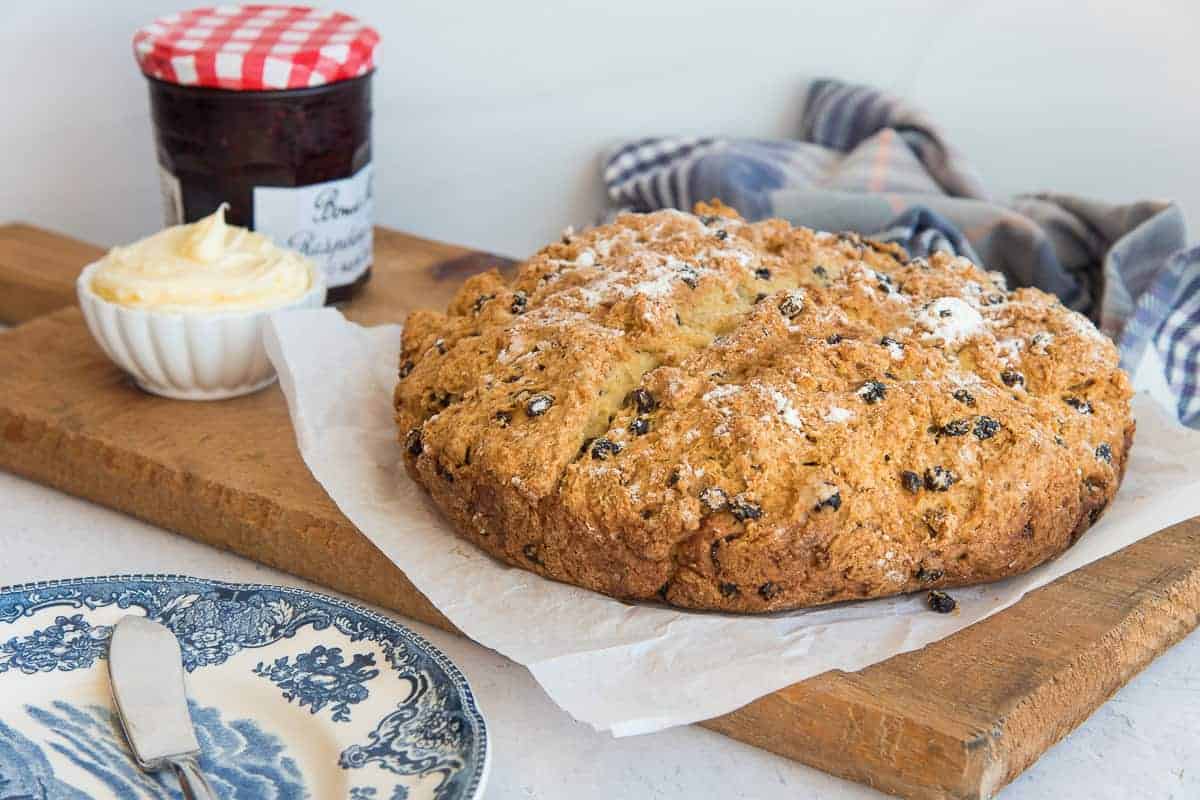
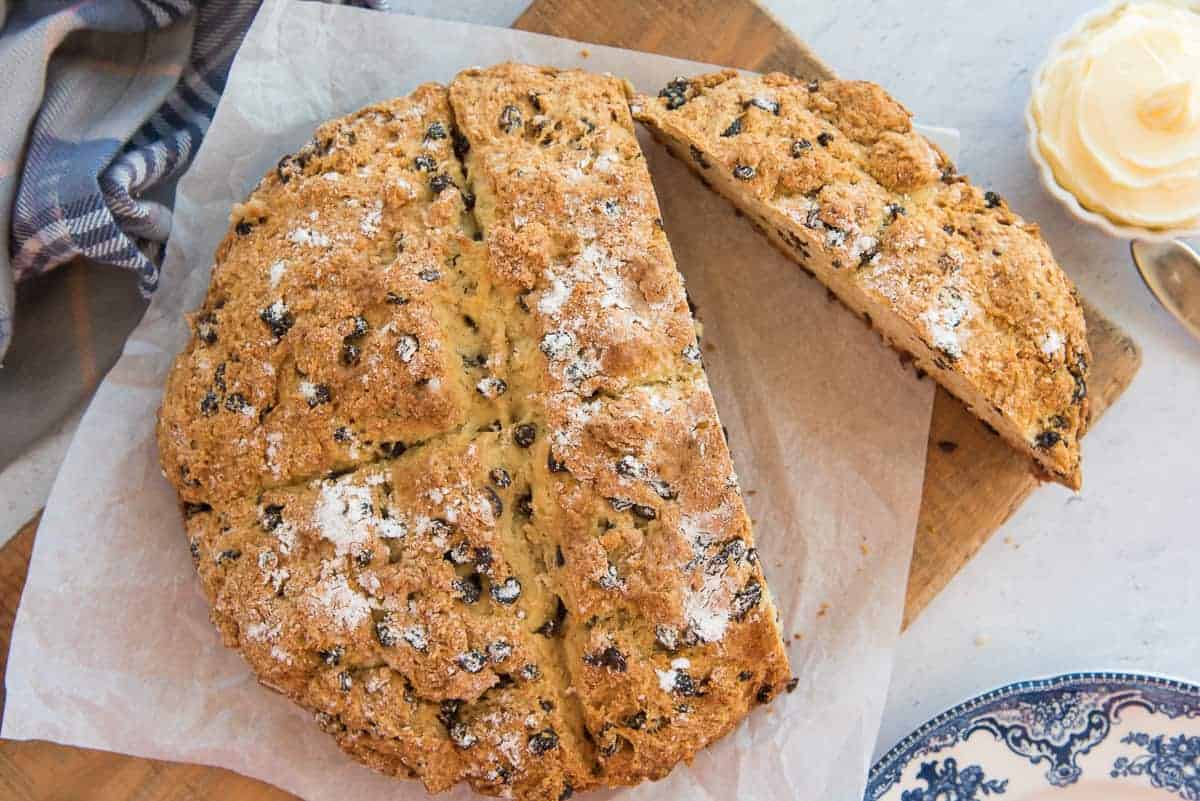

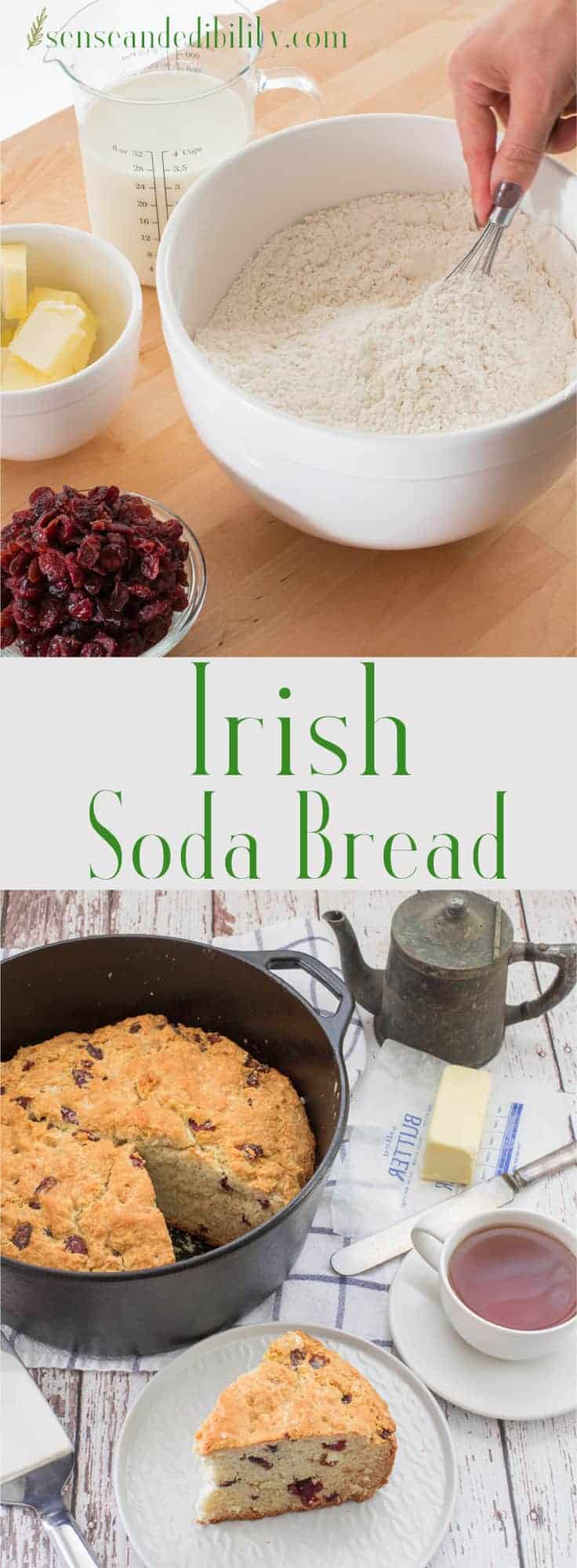
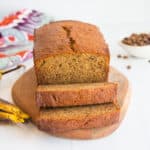
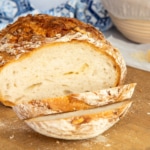
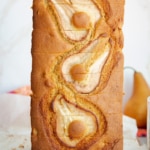

I love the simplicity and “unfussiness” that you mentioned! Sounds like my kinda recipe, haha! I hope your finger is feeling ok!
The finger is still the bane of my existence right now, but thanks for asking! And, yes, I love simply and unfussy every once in awhile.
Your pictures look amazing! I have never tried making Irish Soda Bread – but your recipe does look super easy AND delicious. I’ll give it a try this St. Patrick’s day. Thank you!
Thank you so much, Autumn. I’m really falling in love with food photography. I think if there’s ever a recipe to start baking bread with, this is it.
I’m not much of a Chef but this seems simple enough! I could try this out before my friends’ St Pattys function. Hopefully it turns out well.
This is certainly a straightforward, simple recipe… and you can never have too much bread, so do a trial run. Have fun!
I love Irish Soda Bread and I’m so jealous you learned to bake in Ireland! Dream!
I have never heard of Irish soda bread before but this looks delicious!!
Really, Emily? Well, I’d be honored to be the one to introduce you to it! I hope you give the recipe a whirl!
I can not wait to try this! And your poor hand! Quick healing vibes to you!!!
Thank you so much, Alice! I hope you enjoy it!